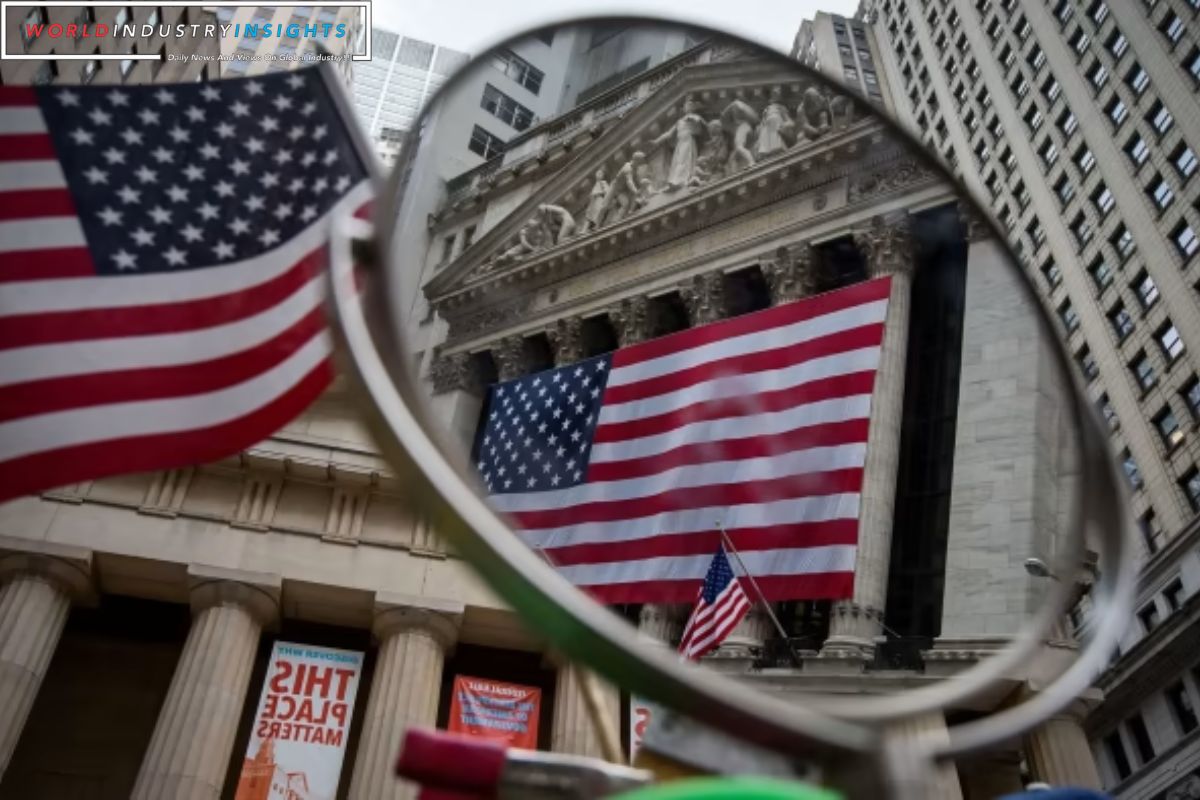Navigating the Economic Waves: The U.S. Federal Reserve embarked on 2023 with a somber tone, grappling with staff projections hinting at a plausible recession. Policymakers envisioned sluggish growth and increasing unemployment as they opted for rapid interest rate hikes to curb inflation. However, the year concludes with the Fed witnessing faster-than-expected progress on inflation, a resilient economy that grew substantially, and the likelihood of rate cuts looming on the horizon. This rollercoaster ride was filled with twists and turns, surprising the financial landscape.
The journey commenced with a cautious outlook, as the Fed staff deemed a recession plausible, setting the stage for a challenging year. Policymakers anticipated growth near stall speed, reflecting the costs of tackling inflation head-on with a series of interest rate increases. The specter of rising unemployment loomed large, raising concerns about the potential economic fallout.
Yet, as the months unfolded, the economic landscape defied the initial projections. The Fed found itself in a more favorable position, with progress on inflation occurring at a pace faster than anticipated. Remarkably, this progress transpired with minimal increases in the jobless rate. The economy surged forward, growing five times faster than the conservative 0.5% growth forecasted a year ago.
One of the significant surprises was the shift away from the term “transitory” to describe inflation by Fed Chair Jerome Powell. This shift highlighted the intricate dynamics at play, influenced by various factors such as the global goods supply chain disruptions caused by the pandemic. Trillions of dollars poured into consumers’ hands during the pandemic, stoking demand that eventually hit a wall due to supply chain challenges.
2023 witnessed the unwinding of supply pressures as inventories rebuilt, potentially to excess. The unexpected rise in worker productivity became a crucial factor. Rising productivity is a boon for central bankers, allowing for faster economic growth without triggering inflation concerns. This unforeseen boost in productivity led Powell to shift away from the notion that subduing inflation required painful measures like rising unemployment.
Also Read: Danske Bank Strategic Shift: Navigating Economic Waves with Prudence
Despite initial concerns about the endurance of financial buffers built by households and local governments, these reserves proved more robust than expected. Consumer spending consistently outperformed expectations, showcasing the surprising resilience of household finances.
The unexpectedly robust economic growth, estimated at 2.6%, raised questions about the economy’s underlying potential. The Fed’s estimate of the economy’s growth potential at around 1.8% annually was surpassed, indicating a potential boost in productivity that central bankers are often reluctant to rely on.
As the year progressed, the Fed faced another surprise in the form of contained bank failures following the collapse of Silicon Valley Bank. While there was stress in the financial system, it did not escalate into a broader crisis. This period of financial uncertainty prompted a reevaluation of the speed of further rate increases, leading to a cautious approach by Fed policymakers.
The year 2023 was marked by a series of unexpected turns, challenging initial forecasts and presenting the Fed with both obstacles and opportunities. While inflation saw progress, uncertainties still linger as the Fed contemplates the path forward. The central bank’s challenge now is to ensure a soft landing without causing undue financial stress, navigating the economic waves with precision and adaptability.
As the curtain falls on 2023, the Fed’s journey reflects the unpredictable nature of economic dynamics. The delicate balance between inflation, growth, and financial stability will continue to shape the narrative as the central bank charts its course into the future.
Our Reader’s Queries
What are the 4 stages of the business cycle?
The economic cycle, also known as the business cycle, is comprised of four distinct stages. These stages include expansion, peak, contraction, and trough. Each stage represents a different phase of the cycle, with expansion indicating growth and peak indicating the highest point of growth. Conversely, contraction represents a decline in growth, while trough represents the lowest point of the cycle. Understanding these stages is crucial for businesses and investors alike, as it can help them make informed decisions about when to invest, expand, or contract.
Which things usually decrease during a recession?
During a recession, the economy experiences a decline in economic output, employment, and consumer spending. To help boost the economy, the central bank, like the U.S. Federal Reserve Bank, may cut interest rates. This can help stimulate economic growth and encourage spending.
What business cycle are we in 2023?
As we approach the fourth quarter of 2023, it’s clear that several major economies, including the U.S., are still in the late cycle stage of expansion. While there’s evidence of solid service activity in many developed economies, there are also global crosswinds to contend with. Monetary tightening and rising oil prices are weighing on the outlook, making it a challenging time for businesses and investors alike. Despite these headwinds, there are still opportunities to be found for those who are willing to navigate the current landscape with care and precision.
What is the wave like movement in economic activity?
A business cycle is essentially a pattern of fluctuation in the overall economic activity of a country, including national income, employment, and output. It can be visualized as a wave-like movement, with periods of growth and decline. Essentially, it refers to the natural ups and downs that occur in the business world.


